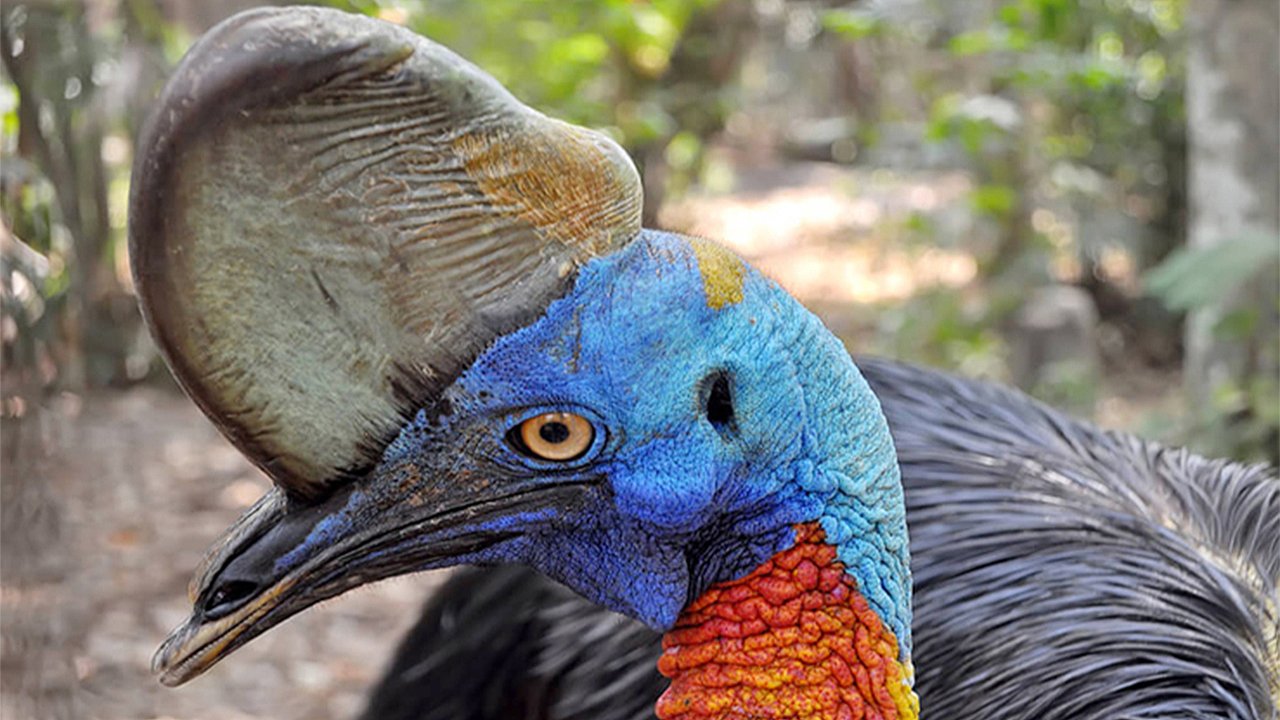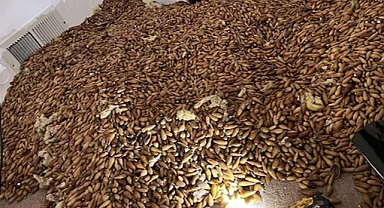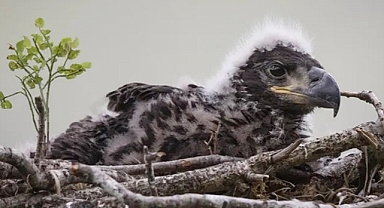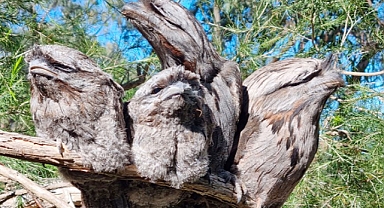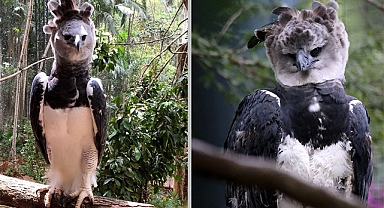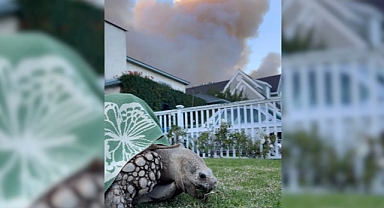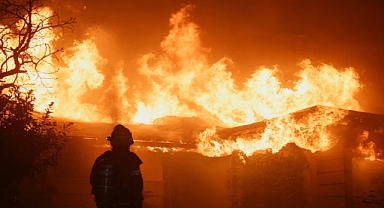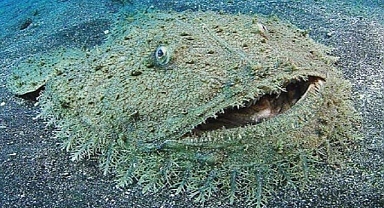What is a Cassowary?Cassowaries are ratites, a group of large, flightless birds that also includes emus and ostriches. Native to the rainforests of northeastern Australia, New Guinea, and nearby islands, cassowaries are known for their significant size and weight. The southern cassowary, the most common species, stands between 5 and 6 feet (1.5 to 1.8 meters) tall and can weigh up to 170 pounds (77 kilograms), making it the second-heaviest bird in the world after the ostrich. Despite their massive size, cassowaries have small wings and cannot fly. Their habitat is dense, tropical rainforest, which they navigate with surprising speed and agility.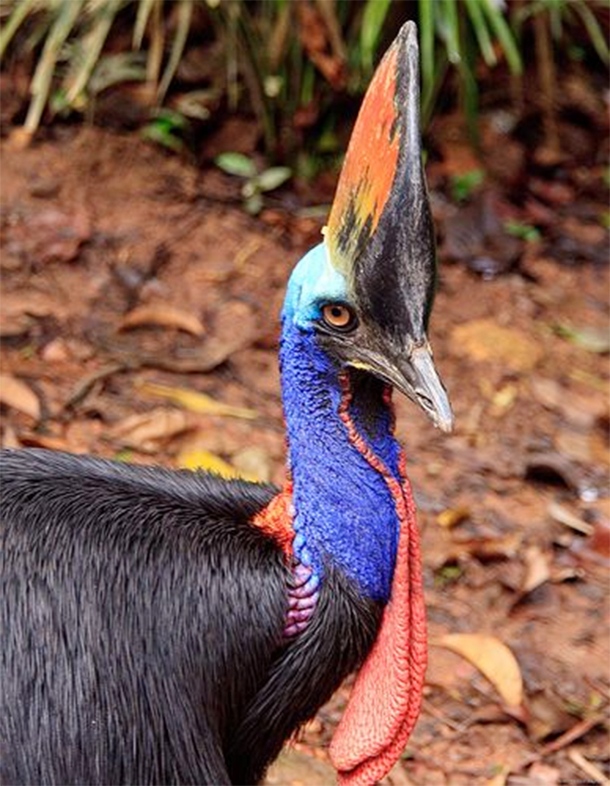 Physical Characteristics of the CassowaryThere are three species of cassowaries: northern cassowary, southern cassowary, and dwarf cassowary. The southern Cassowary is particularly striking with its glossy black plumage, a vivid blue face, red wattles, and a casque—a helmet-like structure on its head. The casque is made of keratin (the same protein as nails and feathers) and is thought to have several potential functions, including protecting the bird’s head as it moves through the dense forest or signaling its age and vitality to other cassowaries. Their wings are short, extending less than a foot from their body. Unlike flighted birds, cassowary feathers are long, hair-like, and adapted to direct water away from their body, which is perfect for a life on the forest floor.Diet and Ecological RoleCassowaries are frugivores, feeding primarily on fallen fruits, which they locate by digging through leaf litter with their sharp claws. This makes them essential to their ecosystem, as they help disperse seeds over large distances, promoting biodiversity. In fact, cassowaries are considered a keystone species because they spread large seeds that other animals cannot. When cassowaries consume fruit, the seeds pass through their digestive system and are deposited in their droppings, often far from the original tree. This not only helps in spreading plants but also aids their growth by surrounding the seeds with natural fertilizer.The Unique Cassowary Family StructureUnlike many bird species, male cassowaries take on the primary role in raising offspring. After the female lays her eggs, the male incubates them and takes full responsibility for caring for the chicks. The female, meanwhile, returns to her solitary lifestyle and may mate with other males, ensuring a diverse genetic pool.
Physical Characteristics of the CassowaryThere are three species of cassowaries: northern cassowary, southern cassowary, and dwarf cassowary. The southern Cassowary is particularly striking with its glossy black plumage, a vivid blue face, red wattles, and a casque—a helmet-like structure on its head. The casque is made of keratin (the same protein as nails and feathers) and is thought to have several potential functions, including protecting the bird’s head as it moves through the dense forest or signaling its age and vitality to other cassowaries. Their wings are short, extending less than a foot from their body. Unlike flighted birds, cassowary feathers are long, hair-like, and adapted to direct water away from their body, which is perfect for a life on the forest floor.Diet and Ecological RoleCassowaries are frugivores, feeding primarily on fallen fruits, which they locate by digging through leaf litter with their sharp claws. This makes them essential to their ecosystem, as they help disperse seeds over large distances, promoting biodiversity. In fact, cassowaries are considered a keystone species because they spread large seeds that other animals cannot. When cassowaries consume fruit, the seeds pass through their digestive system and are deposited in their droppings, often far from the original tree. This not only helps in spreading plants but also aids their growth by surrounding the seeds with natural fertilizer.The Unique Cassowary Family StructureUnlike many bird species, male cassowaries take on the primary role in raising offspring. After the female lays her eggs, the male incubates them and takes full responsibility for caring for the chicks. The female, meanwhile, returns to her solitary lifestyle and may mate with other males, ensuring a diverse genetic pool.
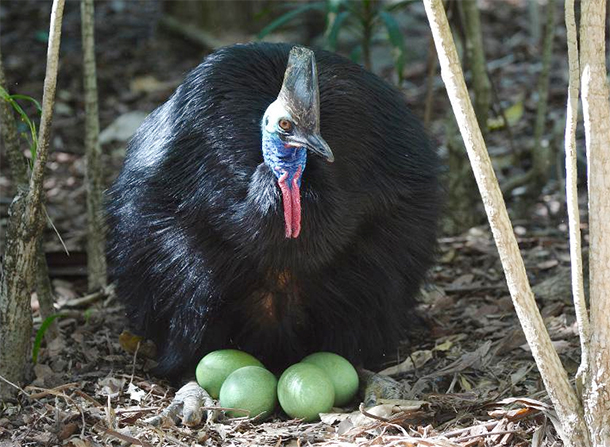 Why Can’t Cassowaries Fly?Cassowaries are flightless due to the structure of their feathers, which are long, coarse, and unsuitable for flight. Their plumage is designed to protect them from the rainforest’s sharp branches and thorns, and to channel water away from their body, which is crucial in their humid environment.What Makes Cassowaries So Dangerous?Cassowaries are built for speed and strength. They can run up to 31 miles per hour (50 km/h), even through dense forest. Their most dangerous feature, however, is their claws. Each of their three toes ends in a sharp, dagger-like claw that can grow between 3 to 5 inches (7 to 12 centimeters) long. A cassowary can deliver a powerful kick, using its claws to inflict severe injuries, including lacerations and damage to internal organs. The bird’s ability to cause harm has earned it the reputation of being the world’s most dangerous bird. While fatalities are rare, they have occurred, including the 2019 death of a Florida man who was attacked by his pet cassowary after falling.How Often Do Cassowaries Attack?Though cassowary attacks on humans are uncommon, they do happen, especially when people attempt to feed or provoke them. For instance, the 75-year-old Florida man mentioned earlier was attacked by his cassowary after he tripped and fell. Cassowaries are classified as dangerous animals in some regions, like Florida, where special permits are required to keep them. Despite their deadly potential, the chances of being attacked by a cassowary are extremely low. According to Guinness World Records, you are far more likely to suffer from a snake bite or a dog-related infection than be injured by a cassowary.
Why Can’t Cassowaries Fly?Cassowaries are flightless due to the structure of their feathers, which are long, coarse, and unsuitable for flight. Their plumage is designed to protect them from the rainforest’s sharp branches and thorns, and to channel water away from their body, which is crucial in their humid environment.What Makes Cassowaries So Dangerous?Cassowaries are built for speed and strength. They can run up to 31 miles per hour (50 km/h), even through dense forest. Their most dangerous feature, however, is their claws. Each of their three toes ends in a sharp, dagger-like claw that can grow between 3 to 5 inches (7 to 12 centimeters) long. A cassowary can deliver a powerful kick, using its claws to inflict severe injuries, including lacerations and damage to internal organs. The bird’s ability to cause harm has earned it the reputation of being the world’s most dangerous bird. While fatalities are rare, they have occurred, including the 2019 death of a Florida man who was attacked by his pet cassowary after falling.How Often Do Cassowaries Attack?Though cassowary attacks on humans are uncommon, they do happen, especially when people attempt to feed or provoke them. For instance, the 75-year-old Florida man mentioned earlier was attacked by his cassowary after he tripped and fell. Cassowaries are classified as dangerous animals in some regions, like Florida, where special permits are required to keep them. Despite their deadly potential, the chances of being attacked by a cassowary are extremely low. According to Guinness World Records, you are far more likely to suffer from a snake bite or a dog-related infection than be injured by a cassowary.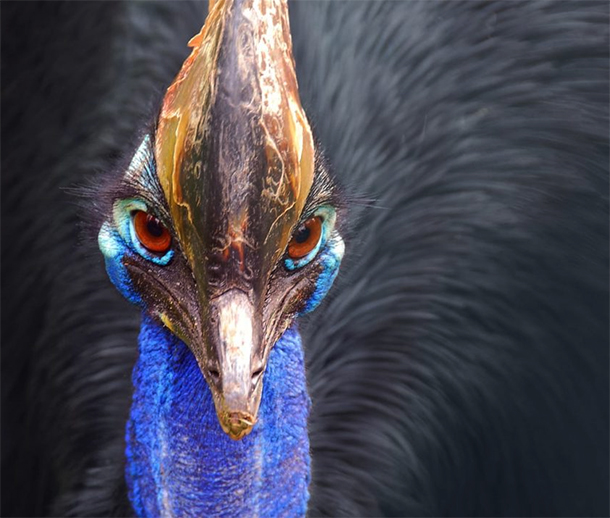 Where to See a CassowaryIf you want to see a cassowary, your safest bet is at a zoo or animal park. These birds are rare in the wild and difficult to spot due to their preference for dense rainforests. Even their deep, low-frequency call is almost inaudible to humans, though you may feel its vibrations if you’re close enough.Cassowaries are generally shy and prefer to avoid human contact. With their excellent hearing, they will likely sense your presence long before you see them and disappear into the forest. But if you do happen to encounter one in the wild, it’s best to keep your distance and avoid provoking it. Cassowaries are fascinating yet dangerous creatures. With their sharp claws, powerful legs, and imposing size, they can inflict serious harm. However, they are also crucial to their ecosystem, playing a vital role in seed dispersal. Admire them from afar and give them the respect they deserve.
Where to See a CassowaryIf you want to see a cassowary, your safest bet is at a zoo or animal park. These birds are rare in the wild and difficult to spot due to their preference for dense rainforests. Even their deep, low-frequency call is almost inaudible to humans, though you may feel its vibrations if you’re close enough.Cassowaries are generally shy and prefer to avoid human contact. With their excellent hearing, they will likely sense your presence long before you see them and disappear into the forest. But if you do happen to encounter one in the wild, it’s best to keep your distance and avoid provoking it. Cassowaries are fascinating yet dangerous creatures. With their sharp claws, powerful legs, and imposing size, they can inflict serious harm. However, they are also crucial to their ecosystem, playing a vital role in seed dispersal. Admire them from afar and give them the respect they deserve.
 Physical Characteristics of the CassowaryThere are three species of cassowaries: northern cassowary, southern cassowary, and dwarf cassowary. The southern Cassowary is particularly striking with its glossy black plumage, a vivid blue face, red wattles, and a casque—a helmet-like structure on its head. The casque is made of keratin (the same protein as nails and feathers) and is thought to have several potential functions, including protecting the bird’s head as it moves through the dense forest or signaling its age and vitality to other cassowaries. Their wings are short, extending less than a foot from their body. Unlike flighted birds, cassowary feathers are long, hair-like, and adapted to direct water away from their body, which is perfect for a life on the forest floor.Diet and Ecological RoleCassowaries are frugivores, feeding primarily on fallen fruits, which they locate by digging through leaf litter with their sharp claws. This makes them essential to their ecosystem, as they help disperse seeds over large distances, promoting biodiversity. In fact, cassowaries are considered a keystone species because they spread large seeds that other animals cannot. When cassowaries consume fruit, the seeds pass through their digestive system and are deposited in their droppings, often far from the original tree. This not only helps in spreading plants but also aids their growth by surrounding the seeds with natural fertilizer.The Unique Cassowary Family StructureUnlike many bird species, male cassowaries take on the primary role in raising offspring. After the female lays her eggs, the male incubates them and takes full responsibility for caring for the chicks. The female, meanwhile, returns to her solitary lifestyle and may mate with other males, ensuring a diverse genetic pool.
Physical Characteristics of the CassowaryThere are three species of cassowaries: northern cassowary, southern cassowary, and dwarf cassowary. The southern Cassowary is particularly striking with its glossy black plumage, a vivid blue face, red wattles, and a casque—a helmet-like structure on its head. The casque is made of keratin (the same protein as nails and feathers) and is thought to have several potential functions, including protecting the bird’s head as it moves through the dense forest or signaling its age and vitality to other cassowaries. Their wings are short, extending less than a foot from their body. Unlike flighted birds, cassowary feathers are long, hair-like, and adapted to direct water away from their body, which is perfect for a life on the forest floor.Diet and Ecological RoleCassowaries are frugivores, feeding primarily on fallen fruits, which they locate by digging through leaf litter with their sharp claws. This makes them essential to their ecosystem, as they help disperse seeds over large distances, promoting biodiversity. In fact, cassowaries are considered a keystone species because they spread large seeds that other animals cannot. When cassowaries consume fruit, the seeds pass through their digestive system and are deposited in their droppings, often far from the original tree. This not only helps in spreading plants but also aids their growth by surrounding the seeds with natural fertilizer.The Unique Cassowary Family StructureUnlike many bird species, male cassowaries take on the primary role in raising offspring. After the female lays her eggs, the male incubates them and takes full responsibility for caring for the chicks. The female, meanwhile, returns to her solitary lifestyle and may mate with other males, ensuring a diverse genetic pool. Why Can’t Cassowaries Fly?Cassowaries are flightless due to the structure of their feathers, which are long, coarse, and unsuitable for flight. Their plumage is designed to protect them from the rainforest’s sharp branches and thorns, and to channel water away from their body, which is crucial in their humid environment.What Makes Cassowaries So Dangerous?Cassowaries are built for speed and strength. They can run up to 31 miles per hour (50 km/h), even through dense forest. Their most dangerous feature, however, is their claws. Each of their three toes ends in a sharp, dagger-like claw that can grow between 3 to 5 inches (7 to 12 centimeters) long. A cassowary can deliver a powerful kick, using its claws to inflict severe injuries, including lacerations and damage to internal organs. The bird’s ability to cause harm has earned it the reputation of being the world’s most dangerous bird. While fatalities are rare, they have occurred, including the 2019 death of a Florida man who was attacked by his pet cassowary after falling.How Often Do Cassowaries Attack?Though cassowary attacks on humans are uncommon, they do happen, especially when people attempt to feed or provoke them. For instance, the 75-year-old Florida man mentioned earlier was attacked by his cassowary after he tripped and fell. Cassowaries are classified as dangerous animals in some regions, like Florida, where special permits are required to keep them. Despite their deadly potential, the chances of being attacked by a cassowary are extremely low. According to Guinness World Records, you are far more likely to suffer from a snake bite or a dog-related infection than be injured by a cassowary.
Why Can’t Cassowaries Fly?Cassowaries are flightless due to the structure of their feathers, which are long, coarse, and unsuitable for flight. Their plumage is designed to protect them from the rainforest’s sharp branches and thorns, and to channel water away from their body, which is crucial in their humid environment.What Makes Cassowaries So Dangerous?Cassowaries are built for speed and strength. They can run up to 31 miles per hour (50 km/h), even through dense forest. Their most dangerous feature, however, is their claws. Each of their three toes ends in a sharp, dagger-like claw that can grow between 3 to 5 inches (7 to 12 centimeters) long. A cassowary can deliver a powerful kick, using its claws to inflict severe injuries, including lacerations and damage to internal organs. The bird’s ability to cause harm has earned it the reputation of being the world’s most dangerous bird. While fatalities are rare, they have occurred, including the 2019 death of a Florida man who was attacked by his pet cassowary after falling.How Often Do Cassowaries Attack?Though cassowary attacks on humans are uncommon, they do happen, especially when people attempt to feed or provoke them. For instance, the 75-year-old Florida man mentioned earlier was attacked by his cassowary after he tripped and fell. Cassowaries are classified as dangerous animals in some regions, like Florida, where special permits are required to keep them. Despite their deadly potential, the chances of being attacked by a cassowary are extremely low. According to Guinness World Records, you are far more likely to suffer from a snake bite or a dog-related infection than be injured by a cassowary. Where to See a CassowaryIf you want to see a cassowary, your safest bet is at a zoo or animal park. These birds are rare in the wild and difficult to spot due to their preference for dense rainforests. Even their deep, low-frequency call is almost inaudible to humans, though you may feel its vibrations if you’re close enough.Cassowaries are generally shy and prefer to avoid human contact. With their excellent hearing, they will likely sense your presence long before you see them and disappear into the forest. But if you do happen to encounter one in the wild, it’s best to keep your distance and avoid provoking it. Cassowaries are fascinating yet dangerous creatures. With their sharp claws, powerful legs, and imposing size, they can inflict serious harm. However, they are also crucial to their ecosystem, playing a vital role in seed dispersal. Admire them from afar and give them the respect they deserve.
Where to See a CassowaryIf you want to see a cassowary, your safest bet is at a zoo or animal park. These birds are rare in the wild and difficult to spot due to their preference for dense rainforests. Even their deep, low-frequency call is almost inaudible to humans, though you may feel its vibrations if you’re close enough.Cassowaries are generally shy and prefer to avoid human contact. With their excellent hearing, they will likely sense your presence long before you see them and disappear into the forest. But if you do happen to encounter one in the wild, it’s best to keep your distance and avoid provoking it. Cassowaries are fascinating yet dangerous creatures. With their sharp claws, powerful legs, and imposing size, they can inflict serious harm. However, they are also crucial to their ecosystem, playing a vital role in seed dispersal. Admire them from afar and give them the respect they deserve.